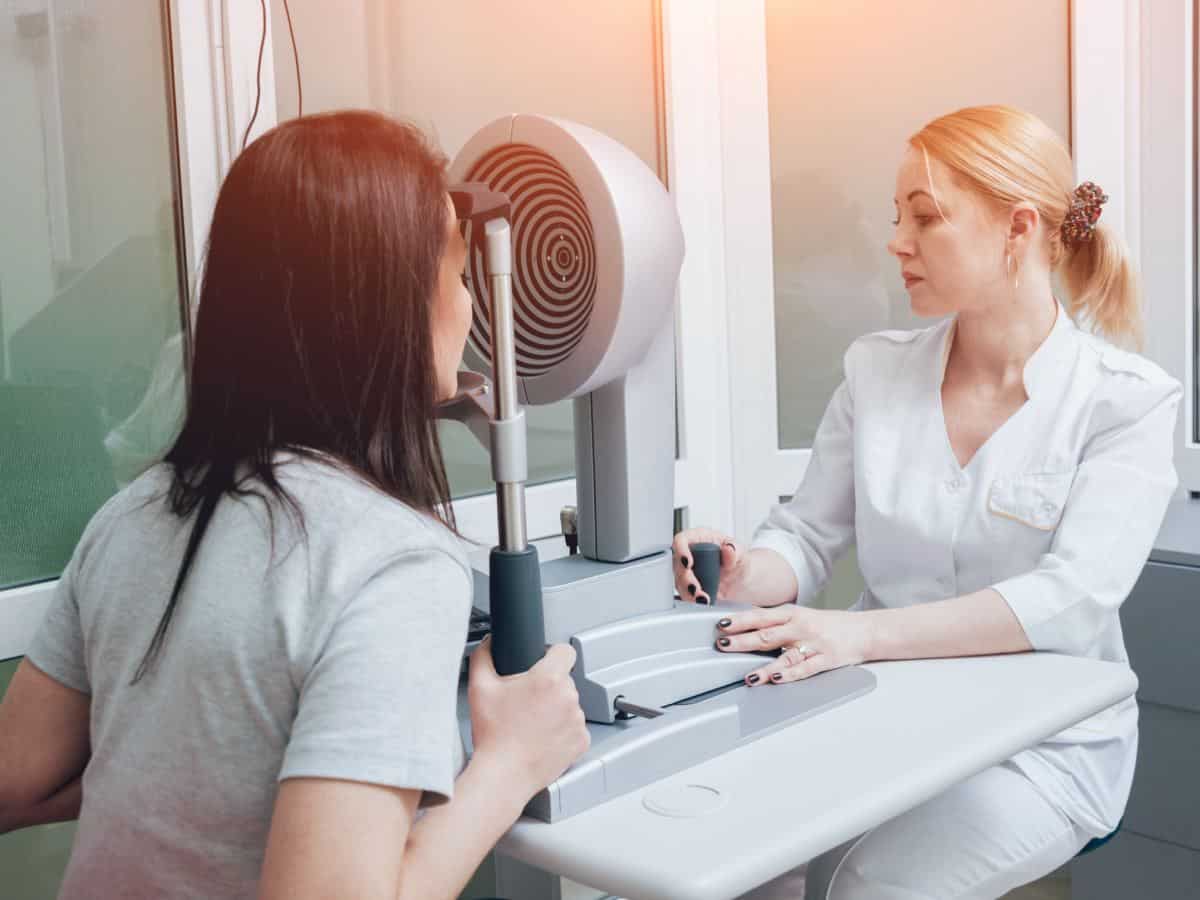
Corneal topography is a diagnostic test that is performed to study in detail the cornea in order to detect anomalies and the existence of irregularities in its curvature that could be compromising correct vision.
Corneal topography is also a necessary tool to examine the cornea before and after a laser refractive surgery.
En Área Oftalmológica Avanzada We explain below what a corneal topography is, how it is done and in which cases it is recommended.
What is corneal topography?
Corneal topography is a test that allows us to obtain a 3D map of the structure of the cornea, which allows us to diagnose lesions that are invisible in other diagnostic instruments.
The cornea is the first lens of the eye and the most important for good vision. For this reason, it is essential to study its state and properties to determine the level of refraction and the uniformity of the surface.
With a corneal topography, optometrists and ophthalmologists obtain a three-dimensional image that allows them to examine the curvature of the cornea, its thickness, elevation, relief and power.
How is a corneal topography done?
Corneal topography is a non-invasive and painless procedure. The test is carried out with a corneal topographer, an instrument that is connected to a highly accurate computer system.
To perform the test, the patient must sit facing the surveyor with their chin resting on a chin rest.
The exam begins when the topographer begins to shine concentric rings of light onto the cornea to measure how they reflect off the tissue.
While the test is being performed, the computer software analyzes the information generated by the equipment and produces an image of the cornea in which different colors are used to identify curvatures, elevations, and other information.
types of surveyors
There are different types of corneal topographers. The most advanced allow the thickness and depth of the cornea chambers to be measured.
The types of surveyors are classified as follows:
Surveyors of specular reflection and elevation surveyors
- Specular reflection topographer or videokeratoscopes: They are the ones usually used in optics and allow the study of elevations and curvatures in the cornea to detect refractive errors. They are also used to be able to make adaptations of the contact lenses.
- Elevation Surveyor: they provide additional information such as the thickness of the cornea or pachymetry and the thickness and angle of the corneal chambers. The best known are the Sirius surveyor, the Pentacam surveyor and the Galilei surveyor.
Surveyors with wide cone and narrow cone
Those with a narrow cone allow studying more areas of the cornea's structure than those with a wide cone.
When is it advisable to make a corneal topography?
Corneal topography is a technique that ophthalmologists use both to diagnose and monitor different conditions.
An ophthalmology specialist usually orders a corneal topography when you need:
- Evaluate if a patient is a candidate for different laser refractive surgeries and determine which technique is most suitable in your case: FemtoLasik / LASIK /LASEK/ PRK.
- Determine if a patient is a candidate for implant an intraocular lens.
- Track the results of laser refractive surgery and intraocular lens surgeries.
- At Lóleo Eventos, Contact lenses adaptation of a patient.
- Diagnose and monitor different conditions related to the cornea such as keratoconus, pellucid marginal degeneration and irregular astigmatism.
Do you have more questions about the corneal topography? In Área Oftalmológica Avanzada, our team of experts will be happy to welcome you.




